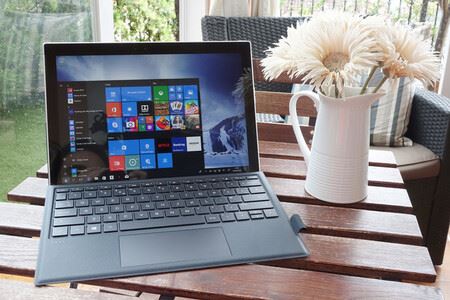Patch Tuesday arrives with updates for Windows 10 1909

Table of contents:
Microsoft has released updates for two different groups of users. On the one hand, and for those who use Windows 10 in version 1909 (November 2019 Update), it has released a cumulative update through Build 18363.1316 (KB4598229) , while for those using Windows 10 version 20H2 they release Build 19042.746 (19041.746 for those using Windows 10 2004).
Updates that provide important bug fixes and improvements in general functionality and security that can be installed now, both online and offline.Builds that fix a major security issue and still have data loss issues.
Build 18363.1316

Starting with Build 18363.1316 for Windows 10 November 2019 Update, this is a security update that arrives with patch KB4598229. An update that is part of Patch Tuesday and that comes with these improvements:
-
"
- Fixes a security vulnerability issue with HTTPS-based intranet servers. After installing this update, HTTPS-based intranet servers cannot, by default, use a user proxy to detect updates. Scans using these servers will fail if you have not configured a system proxy on the clients. If you must use a user proxy, you must configure the behavior using the Allow user proxy to be used as a fallback if detection by system proxy fails policy.To ensure the highest levels of security, you can also use Windows Server Update Services (WSUS) Transport Layer Security (TLS) certificate pinning on all devices. This change does not affect clients using WSUS HTTP servers. For more information, see Changes to scans, improved security for Windows devices ." "
- Fixes a security bypass vulnerability that exists in the way that the Printer Remote Procedure Call binding>"
- Addresses an issue where could corrupt the file system of some devices and prevent them from starting after running chkdsk /f .
- Windows Security Updates to Application Platform and Frameworks, Microsoft Graphics Components, Windows Media, Windows Fundamentals, Windows Kernel, Windows Cryptography, Windows Virtualization, Windows Computers , and Windows Hybrid Storage Services.
In addition, among the known problems they warn that they are still present and They work to solve the failures that can cause the loss of certificates when you upgrade a device from Windows 10 version 1809.
Build 19042.746

On the other hand, they have released Build 19042.746 for those who are on Windows 10 October 2020 Update or 19041.746, for those who use Windows 10 2004. Both present the same solutions :
- "Fixes a security vulnerability issue with HTTPS-based intranet servers. After installing this update, HTTPS-based intranet servers cannot, by default, use a user proxy to detect updates.Scans using these servers will fail if a system proxy has not been configured on the clients. If you must use a user proxy, you must configure the behavior using the Allow user proxy to be used as a fallback if detection by system proxy fails policy. To ensure the highest levels of security, Windows Server Update Services (WSUS) Transport Layer Security (TLS) certificate pinning can also be used on all devices. This change does not affect clients using WSUS HTTP servers. For more information, see Scan Changes, Improved Security for Windows Devices ."
- Fixes a security bypass vulnerability that exists in the way that the Remote Printer Procedure Call (RPC) binding handles authentication for the remote Winspool interface. For more information, see KB4599464 .
- Windows Security Updates to Application Platform and Frameworks, Windows Media, Windows Fundamentals, Windows Kernel, Windows Cryptography, Windows Virtualization, Windows Computers, and Windows Hybrid Storage Services.
And as in the previous case, the problems with the certificates and data that users store are still present, a problem that although they work in solving does not yet have a corrective patch.
"If you have any of the Windows 10 versions mentioned, you can download the update using the usual route, that is,Settings > Update and Security > Windows Update or do it manually by downloading the corresponding installer."
More information | Microsoft




